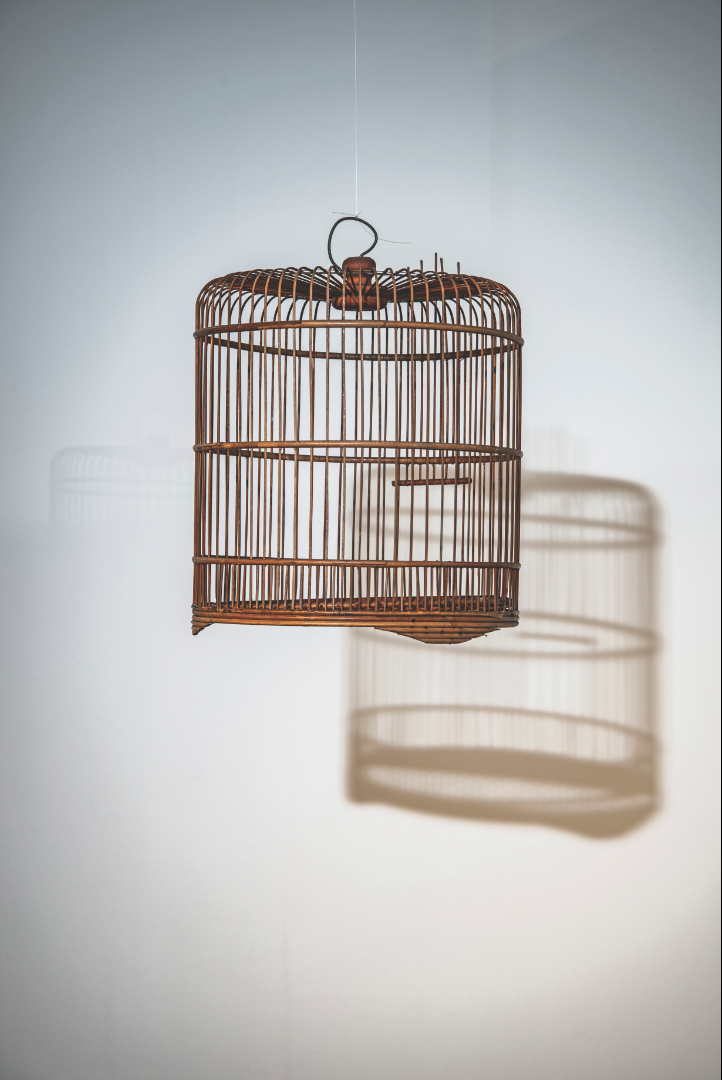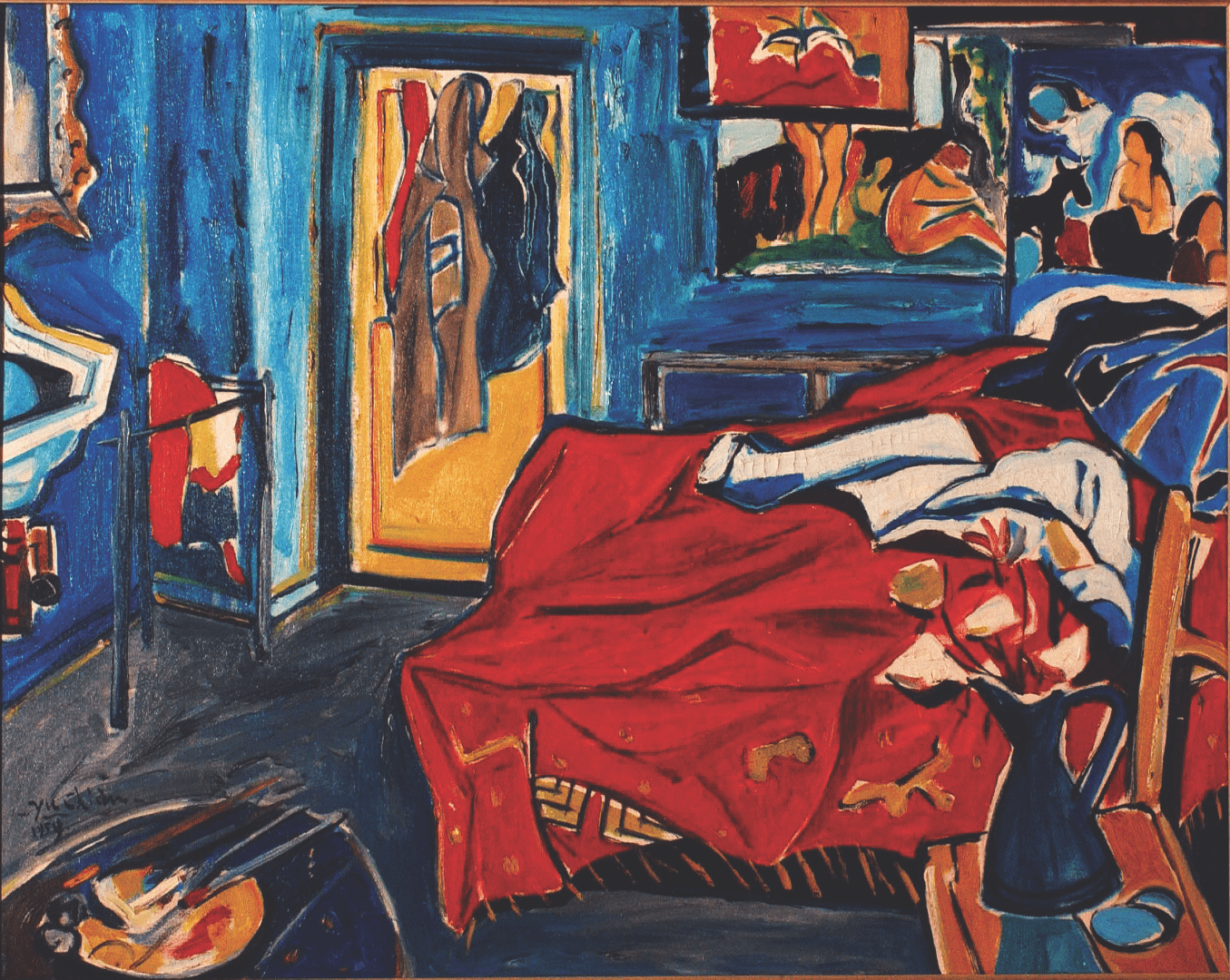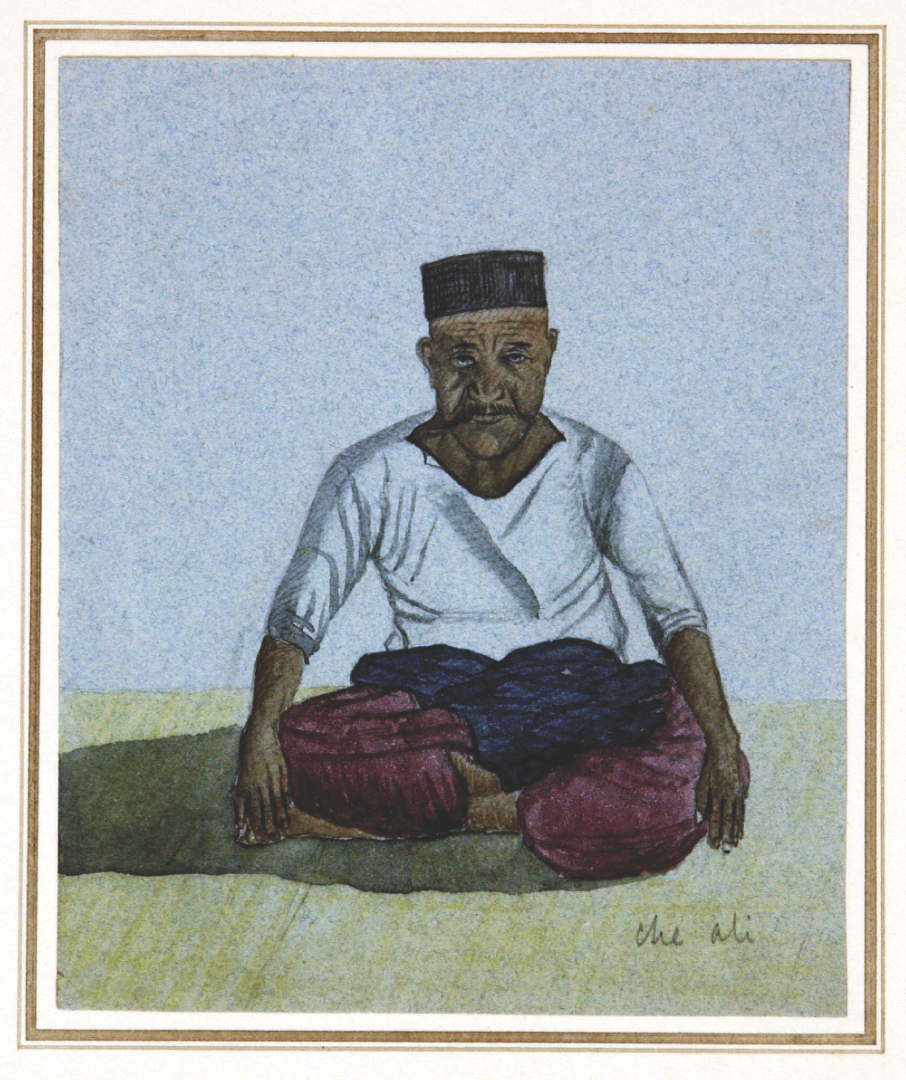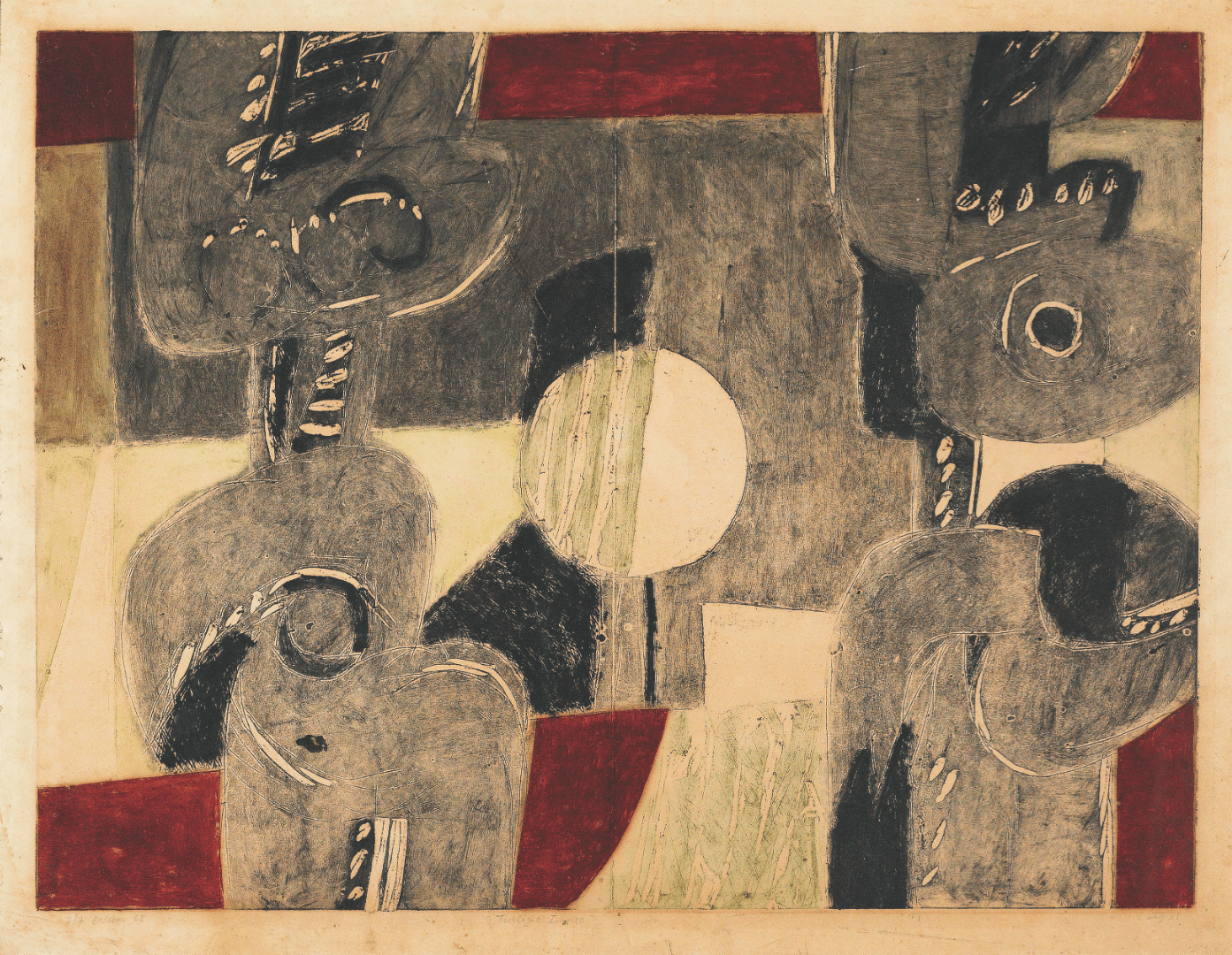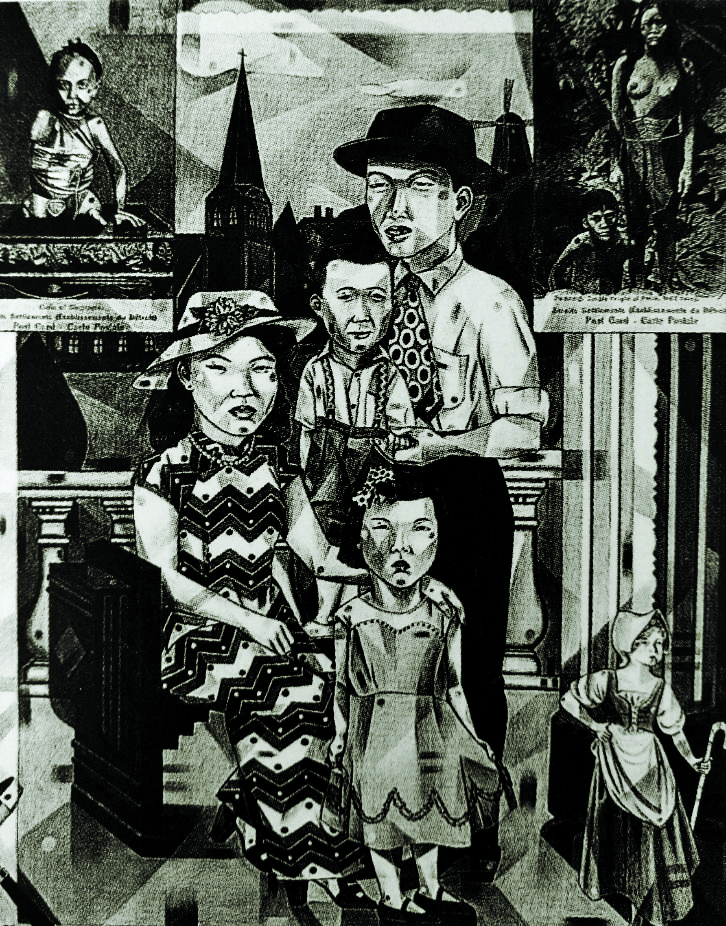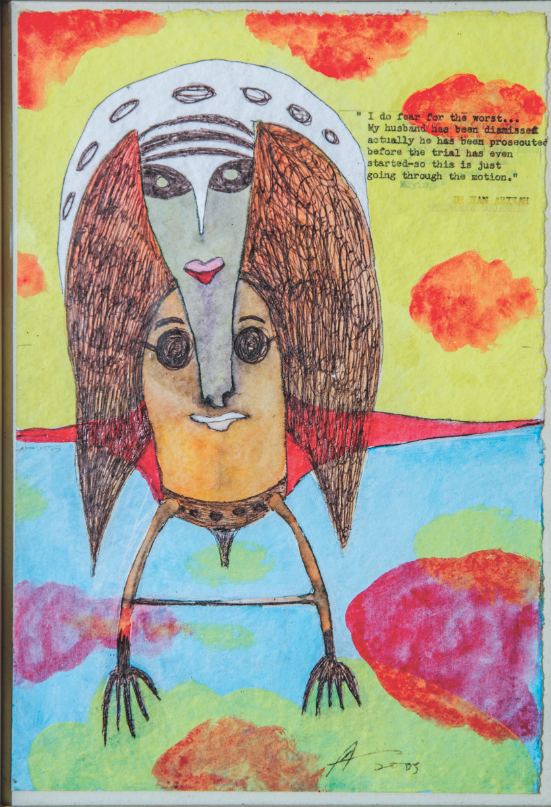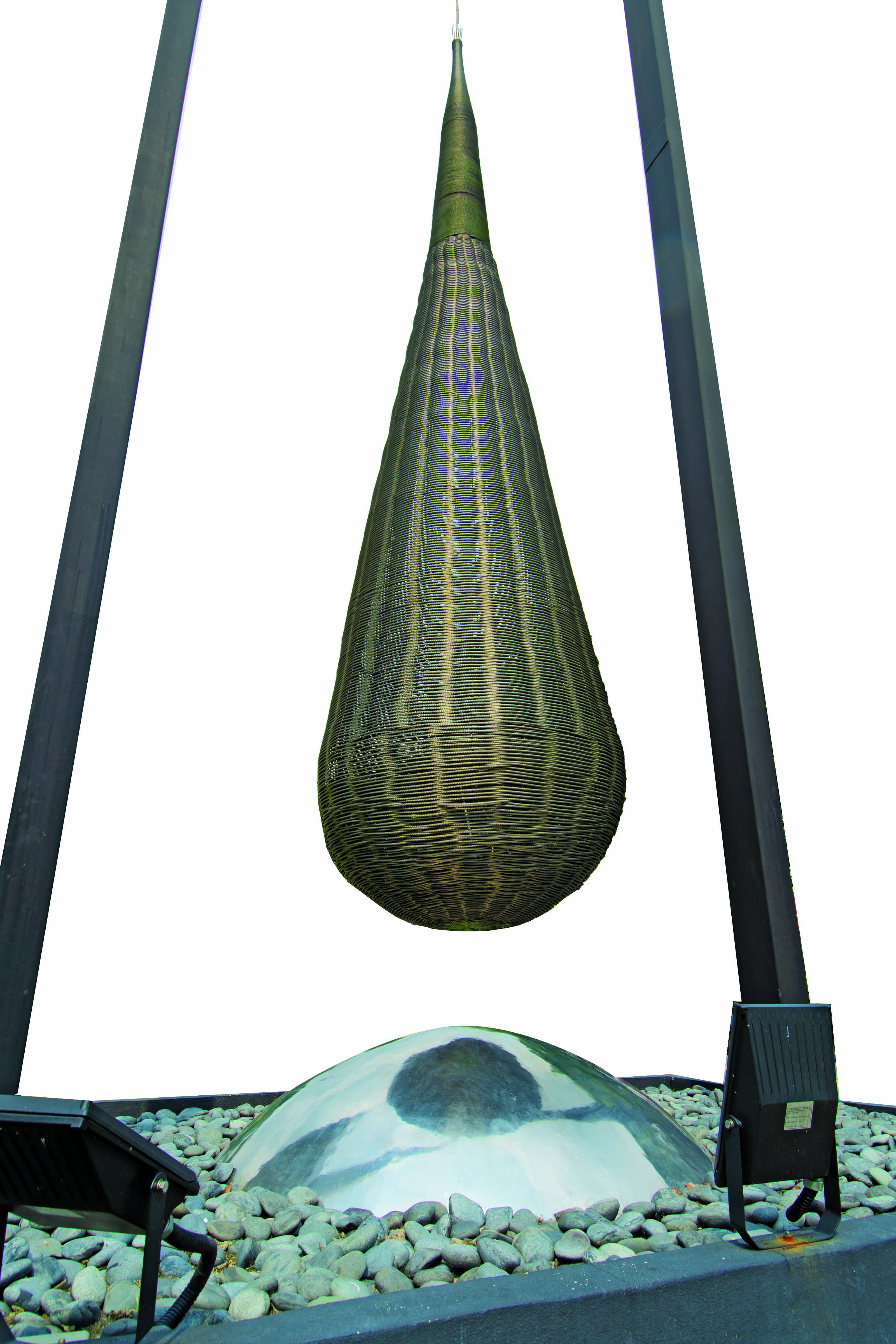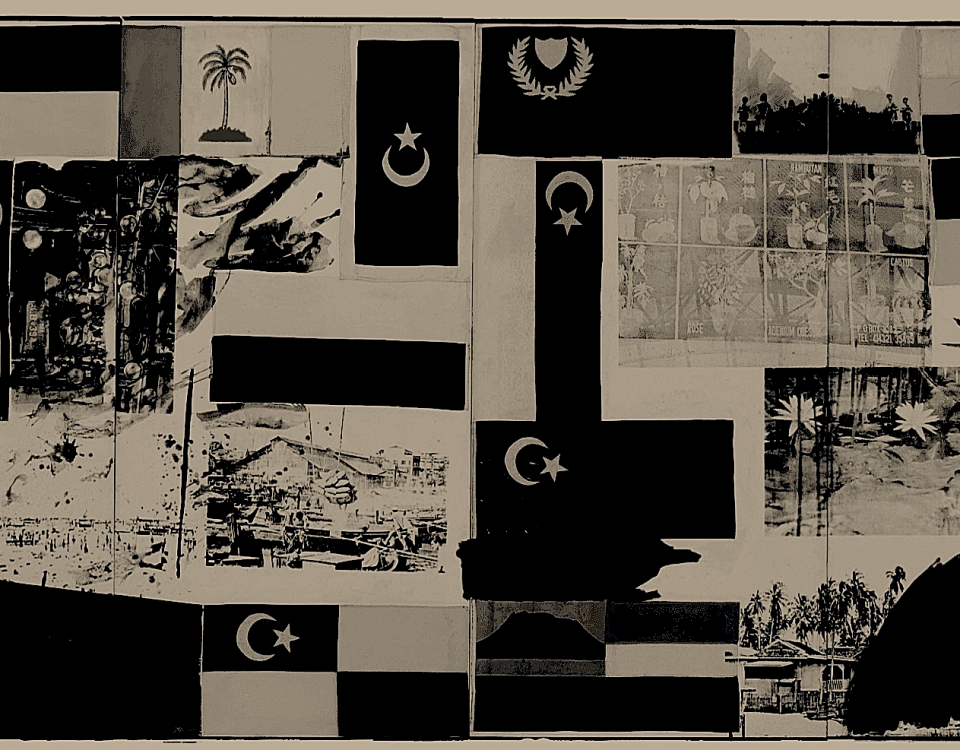The following images from the National Art Gallery collection conjures anecdotal points trailing its sixty years of existence. Assembled from A to Z to enable you to discover and imagine a vibrant art and artists’ directory in a delightful visual harmony of our shared memories.
AYAM JANTAN
Welded metal on wood base
by ANTHONY LAU 1963.
59 x 91 x 28cm
Anthony Lau (born in 1933-2016), our iconic modernist sculptor diligently planned and welded several metal rods and cut outs with an emphasis on textural effect to represent the elongated silhouette of the Ayam Jantan the crowing cockerel perched on a wooden base in a dramatic expressionistic forward thrust.
He has declared his aesthetic position as such: “I am dictated by the material. An artist must respect the material.”
BUJANG BERANI
Welded iron, metal strips and plaster of paris
by BAYU UTOMO RADJIKIN 1991.
100 x 97 x 55 cm
Bayu Utomo Radjikin (born in 1969 in Sabah) produced this work which won the major prize in the 1991 Young Contemporaries. The panel commented on how Bujang Berani epitomises the collision between two contradictory forces such as the conflicting desires of the individual and society. The warrior screams in torment at the rapid destruction of his rainforest habitat and the immense social dislocation that follows. One could feel the Iban warrior’s anguish in the face of cultural displacement.
CHINESE INK PAINTING
‘One hundred Malay Children’
by HUANG YAO 1979.
Chinese ink and color on paper
28.5 x 242cm. (3 scrolls)
Gift from the Huang Yao Foundation
Bai Zi Tu or 100 children painting is common in traditional Chinese ink painting as an excellent symbol of a healthy and successful family life. The topic of children appeared in Huang Yao’s works since 1935. Huang Yao (1917-1987) is a pioneer artist and educator who was born in Shanghai and lived in Malaysia in 1956 until his demise.
DOT
‘The Detribalisation Of Tam Binti Che Lat’
by ISMAIL ZAIN 1983.
Acrylic on canvas. 121 x 183cm.
This is a painting depicting a rural Malay dilemma pictured by artist and cultural thinker, Ismail Zain (1930-1991). This is seen through the sense of dislocation experienced by an old Malay woman named Tam cast in foreground surrounded by an urbanised home environment wrought within the media frenzy lifestyle of her children whom she lives with and shadowed by foreign interests as exemplified by a female exotic dancer and the tennis icon Bjorn Borg.
EMPTY
‘Empty bird cage after release of bird at 2.46pm on Monday 10 June 1974’
by Redza Piyadasa.
Found object wood. 43 x 39 x 39cm.
This art piece by Redza Piyadasa (1939-2007) and Sulaiman Esa (born 1941) invites the viewer to find a connection between the banal object (bird cage) and the precise notation in the caption. It forces the viewer to re-think the use of crafted objects carrying symbolic values. The artists claim that the process of art is equal to the process of knowing reality directly. The intention is to emphasise the active rather than the mediating or static function of the traditionally crafted image. The artists draw substantially from the teachings of Zen and Taoism, rejecting the egoistical basis of Western art. This work supports a jointly authored manifesto known as the Mystical Reality.
FRANK SULLIVAN COLLECTION
‘Chez Moi en Paris’ (My room in Paris).
Oil
by CHIA YU CHIAN 1959.
62.5 x 79cm.
The Australian Frank Sullivan, who donated this Fauvist painting of the artist’s room by Chia Yu Chian (1936-1992) to the National Art Gallery was the former Press secretary to our first prime Minister Tunku Abdul Rahman Al Haj. His influence was particularly important in the formation of the National Art Gallery. Forty of his personal collection works were donated to the National Art Gallery from 1958 to 1965.
“...I invited the National Art Gallery to come along and take what they liked. I had two reasons for doing so because the gallery was in its formative years. My first reason was to establish in the public mind that people should donate good works to the Gallery and secondly, to assert the principle that the gallery must have the final choice”.
GEORGE GILES
‘Che Ali’
by George Giles 1885.
Watercolour on paper. 16.7 x 13.9cm.
Giles was regarded by Swettenham as a “gifted draughtsman with the knack of catching natives of any nationality and under any circumstances transferring what he saw on to paper”.
His rendition of Che Ali, or Wan Ali, is particularly valued. The subject who was sent by the Yam Tuan Pahang to see the availability of loaned boats for Sweetenham, can be seen seated in a pensive mood.
The historical drawings and watercolours of Frank Sweetenham and George Giles from 1880-1894 of the journey from Sabak Bernam to Pekan via the Pahang river were acquired by Datuk Lim Chong Keat in 1972. In 1999,
some 89 pieces were acquired by the National Art Gallery.
HOESSEIN
‘Self portrait’ (Potret sendiri)
by Hoessein Enas 1958.
Pastel on paper. 44 x 33.5cm.
The founder of Angkatan Pelukis Semenanjung in 1956 and Father of Portrait painting, Mohammad Hoessein Enas (1924-1995) was artist mentor teacher to generations of APS artists. His preferred medium is in oil and pastels, this rare portrait of himself reveals his fine mastery in the medium. This self portrait is also interesting as the artist has imposed heroic stature on himself as a means of projecting the Self as an artist.
IB
‘Tumult or Kekecohan’
by Ibrahim Hussein 1969.
Acrylic on canvas. 203.4 x 203.4cm.
In 1969, Ib or Ibrahim Hussein (1936-2009) returned from abroad to ponder on what became of his beloved nation after the tragic May 13 riots. He painted a large sized Malaysian flag black in an iconic work titled ‘May 13’, alongside several works including this one that reflected on the struggles, paradoxes and tumult among men.
When Tun Razak asked him “What is May 13 to you as a Malaysian?”
He replied : “Tun..you know this year man landed on the moon. And how did man manage to land on the moon? Because he used his brain, he was able to get there. If we didn’t use our brains, we would still be living like our ancestors of old, full of hatred, and jealousy and would end up killing one another”.
“To me, May 13 is not a national tragedy, It is a human tragedy, and could happen anywhere in the world if man chose to live like that”.
JAWI
‘Alif, Ba Ta’
by AHMAD KHALID YUSOF 1971.
Silkscreen on paper. 66 x 30cm.
The Jawi script has been a favourite motif in many design and artistic creation. It has become one of the signature styles of Ahmad Khalid Yusof (1934-1997).
The artist silk-screened the alphabets ‘Alif Ba Ta’ stacked upon a grid that serves as a structure to the composition. He arranged each letter like a musical notation placed below or above the lines. He shadowed the dark alphabets and the grid on the bright reddish pink background to give an illusion of depth. He once mentioned, “Jawi has often been designed for completely practical and functional purposes but I exploit the letters to produce an artistic form and decorative elements”.
KHALIL IBRAHIM
‘East Coast 1’ (Pantai Timor)
by Khalil Ibrahim 1978.
Batik. 111 x 126cm.
Kelantan and Terrengganu fishermen, communities, toiling on the beaches after the day’s catch has been the favourite subject of the artist Khalil Ibrahim (1934-2018). The exuberance of strong graphic lines attested not only in his acrylic and watercolour paintings but also in his batik explorations which affirmed further his rich Kelantanese heritage.
LATIFF
‘Twilight Imago’
by Abdul Latiff Mohidin 1968.
Woodcut print. 78.5 x 99.5cm.
Gift of Malayan Tobacco.
Malaysia’s iconic artist and literary genius, Latiff or Abdul Latiff Mohidin (born in 1941) is often known for his Pago-pago series. Many have not realised that his Twilight Imago represented Malaysia in the Sao Paulo Biennale in Brazil
in 1969.
This piece captures the graphic visual eloquence of the abstract expressionist master within his favourite medium. In 1973, Latiff was given a retrospective at the National Art Gallery at a very young age.
MIGRANT SERIES
‘Migrant Series: Some Dreamt of Malaya, Some Dreamt of Great Britain’
by WONG HOY CHEONG 1994. Charcoal, photocopy. Transfer and collage on paper. (4 scroll).
190 x150cm.
Migrant series is a tour de force consisting of four large monochromatic paintings on paper chronicling the Chinese diaspora and the indelible Chinese construction to the building of the modern nation. Wong Hoy Cheong (born in 1960) in his seminal Migrants series also illustrate Wong’s forceful reassertion of the importance of figuration in producing socially relevant art.
NATIONAL FIGURES
‘Code Series: Dr. Wan Azizah’
by NOOR AZIZAN RAHMAN PAIMAN 2005.
Mix media on paper. 28 x 19cm.
Noor Azizan Rahman Paiman
(b. 1970) is one of Malaysia’s foremost social commentary artist who draws parodies or satirical renditions of national figures, protagonists and anti-heroes. These works engage our political consciousness through quotes collected and married with particular national or public figures camouflaged as aliens, monsters and villains. Ironically, they remain within the system, using text lifted from government-approved tabloids.
There are a total of forty eight ‘national figures’ who now reside in the National art collection as a series of drawings called, “The Code”. This collection of curious, colourful and humorous jab on our nation’s socio-political landscape works was exhibited at the 5th Asia Pacific Triennial (2006) and is now also collected in Queensland, Australia.
ONE DROP
Stainless Steel
by AZNAN OMAR 2000
486 x 160 x 160cm.
The National Art Gallery public sculpture piece is situated on the grounds of the building is a vertical elegance that commands attention of passersby. The piece by Aznan Omar (born 1973) is made up of a black rectangular arch that dominates the space. From the top middle part of this rectangular form hangs a heavy bulbous ‘drop’.
The ‘drop’ is intricately woven from steel cable wires and levitates above a shiny circular steel form that reflects not only the form but also the surroundings and the sky. The Zen-like simplicity invites one to ponder upon beginnings and the fine balance in Life and creation.







